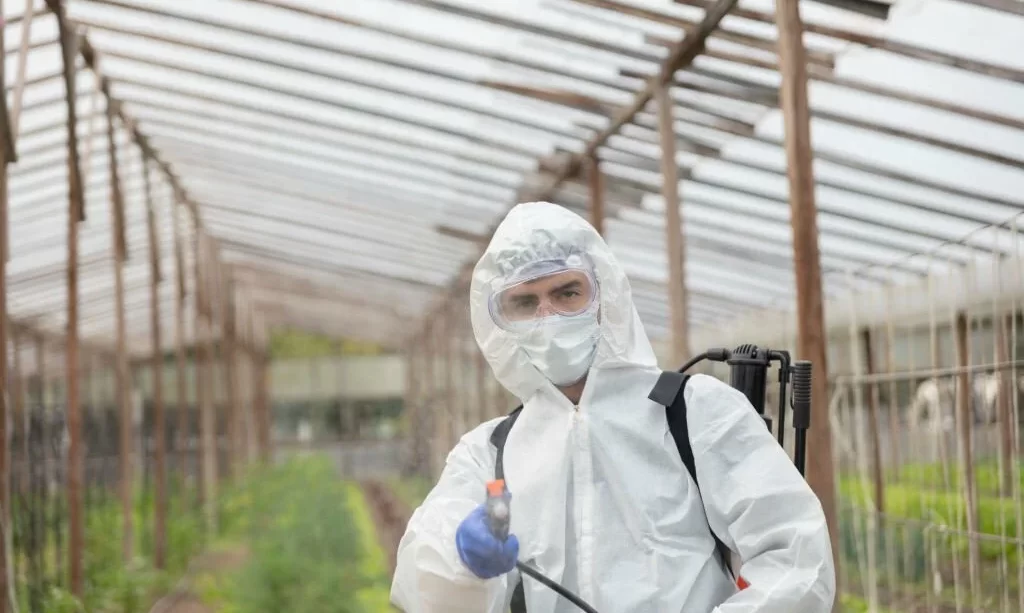Discovering that a neighbor is planning to fumigate their property can raise various concerns, from potential health risks to the impact on your environment. It’s important to approach this situation with knowledge and understanding. In this guide, we will explore the fumigation process, enabling you to make informed decisions and take appropriate actions when a neighbor is fumigating nearby. By understanding the process and its implications, you can ensure that you and your community remain safe and well-informed.
Fumigation Process
Fumigation is a method of pest control that involves the use of gaseous chemicals to eliminate pests, such as insects, rodents, or other unwanted organisms, from a specific area. This process is typically conducted by licensed professionals who have expertise in handling the chemicals and ensuring the safety of the environment and individuals.
Key aspects of the fumigation process include:
- Pest Inspection: Fumigation typically begins with a thorough inspection of the property to identify the type and extent of the pest problem. This assessment helps determine the appropriate fumigant and method to be used.
- Preparation: Before fumigation, specific preparations are necessary. This may include removing or sealing food items, covering or removing plants, and ensuring that the property is vacated.
- Application: Fumigants are applied in a controlled manner to the infested area, often in the form of gas or airtight sealing of the structure. The goal is to create an environment that is lethal to the target pests while maintaining safety for humans and pets.
- Aeration: After a specified period, the fumigated area is aerated to remove the fumigant gas and make it safe for re-entry. Aeration times may vary based on the specific fumigant used.
- Post-fumigation Inspection: Following the aeration process, a post-fumigation inspection is conducted to confirm the effectiveness of the treatment and ensure that the property is safe for occupation.
Understanding these steps in the fumigation process can provide clarity about what your neighbor is undertaking and the measures taken to control pests. It also serves as a foundation for productive discussions with your neighbor to address any concerns and ensure safety for all involved.
Communication with Your Neighbor
Open and respectful communication with your neighbor is a key step in addressing fumigation-related concerns and ensuring a harmonious neighborhood. Here’s how to approach the conversation:
- Initiate a Conversation: Approach your neighbor with a friendly demeanor and express your desire to discuss their fumigation plans. Choose a convenient time and place for both parties.
- Ask Questions: Inquire about the specifics of their fumigation, including the type of pests being targeted, the fumigants to be used, and the expected timeline. This demonstrates your interest in understanding the process.
- Share Your Concerns: If you have concerns, express them calmly and rationally. Discuss any potential effects on your health, pets, or property. Maintain a cooperative and problem-solving attitude.
- Suggest Cooperation: Offer to cooperate by taking necessary precautions on your side, such as closing windows and doors, covering outdoor items, or keeping pets indoors during the fumigation process.
- Agree on Communication: Establish a method of ongoing communication during the fumigation, such as exchanging contact information in case of emergencies or sharing updates about the process.
Precautions and Safety Measures
When your neighbor is fumigating, it’s essential to take specific precautions and safety measures to protect yourself, your family, and your property. Here’s what you can do:
- Close Windows and Doors: Seal your home by closing all windows and doors to prevent the fumigant from entering your living spaces.
- Cover Outdoor Items: If you have outdoor furniture, plants, or other items, cover them to minimize exposure to fumigants. This prevents any potential damage or contamination.
- Stay Indoors: Keep yourself, your family, and your pets indoors during the fumigation process. This will reduce the risk of exposure to the chemicals used.
- Ventilate After Aeration: Once the fumigation is completed and the area is safely aerated, open windows and doors to let fresh air circulate through your home. This helps remove any lingering fumigant odors.
- Follow Expert Advice: If your neighbor’s fumigation company provides specific guidelines or recommendations, follow them diligently to ensure your safety.
By communicating with your neighbor and taking necessary precautions, you can navigate the situation with awareness and cooperation. This approach promotes a sense of community and ensures that the fumigation process proceeds smoothly and safely for everyone involved.
Monitoring and Aftercare
Monitoring and aftercare are essential aspects when dealing with a neighbor’s fumigation. Here’s what you should consider:
- During Fumigation: Stay vigilant during the fumigation process to ensure your precautions are effective and that there are no unexpected issues. If you notice any concerns, such as fumigant odors inside your home, contact your neighbor promptly.
- After Fumigation: After the fumigation is complete, it’s advisable to continue monitoring for any lingering odors or signs of distress among your pets or plants. If you have any doubts about the safety of your environment, contact a professional for advice.
Seeking Legal Advice (if necessary)
While open communication and cooperation are usually effective in addressing concerns related to a neighbor’s fumigation, there may be situations where legal advice becomes necessary:
- Property Damage: If you believe your property has sustained damage due to the fumigation process, you may need to seek legal advice to address any potential compensation or repairs.
- Health Concerns: In rare cases, if you or your family experience health issues related to the fumigation, consulting a legal professional can help you understand your rights and potential courses of action.
- Dispute Resolution: Legal advice can be valuable in resolving disputes related to fumigation when communication with your neighbor reaches an impasse.
Conclusion
Responding to a neighbor’s fumigation requires a balanced approach that includes understanding the fumigation process, open communication, taking precautions, and, if necessary, seeking legal advice. By following these steps, you can address concerns, ensure your safety, and maintain a harmonious neighborhood. Remember that collaboration and cooperation with your neighbor are often the most effective ways to navigate the situation while keeping the well-being of the community in mind.



